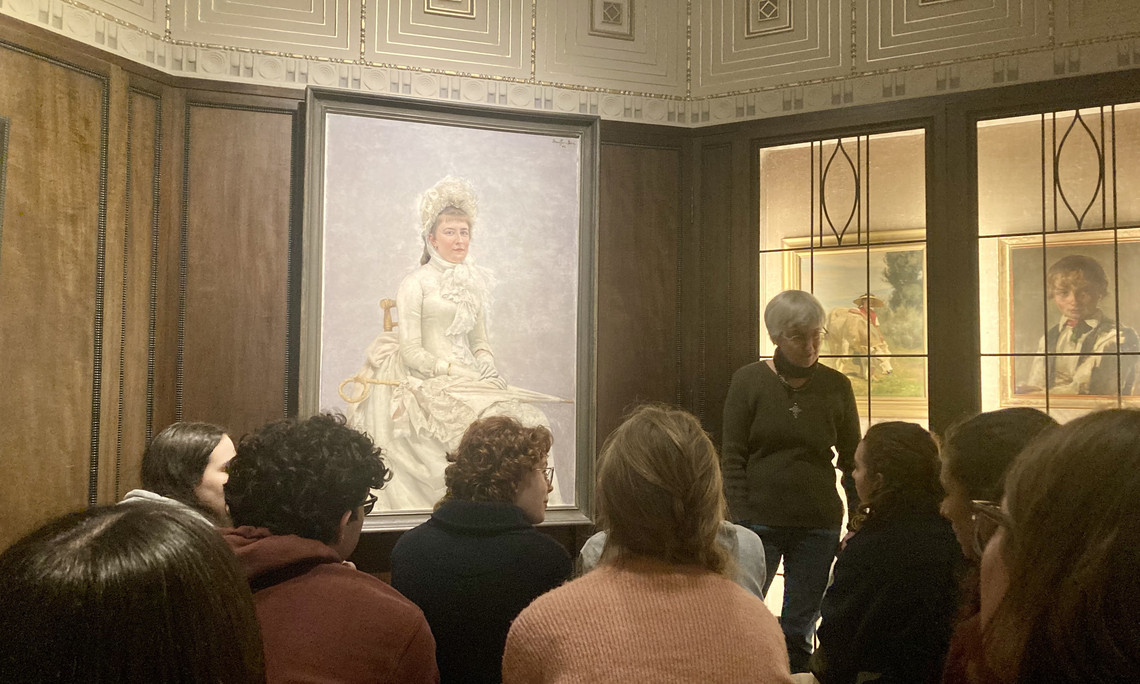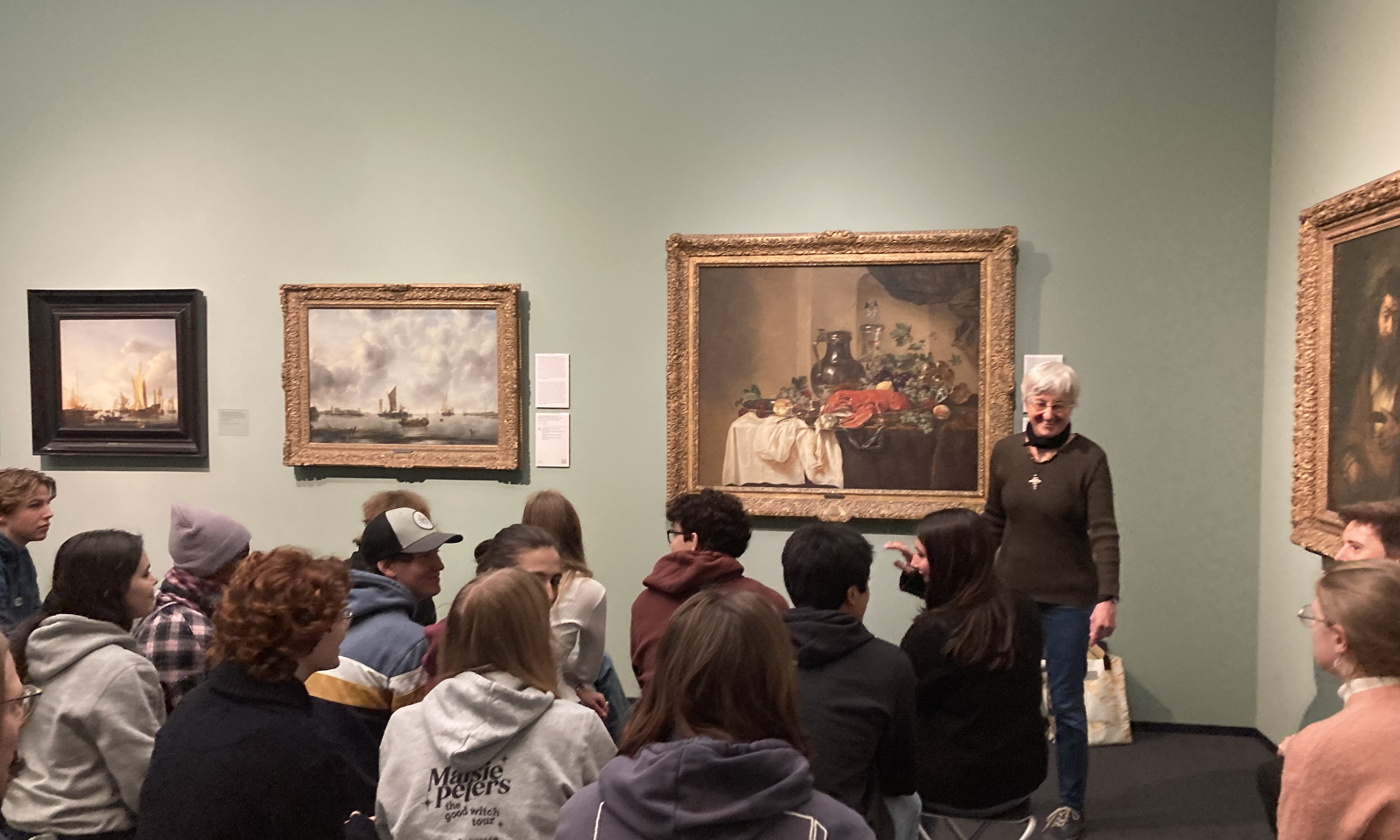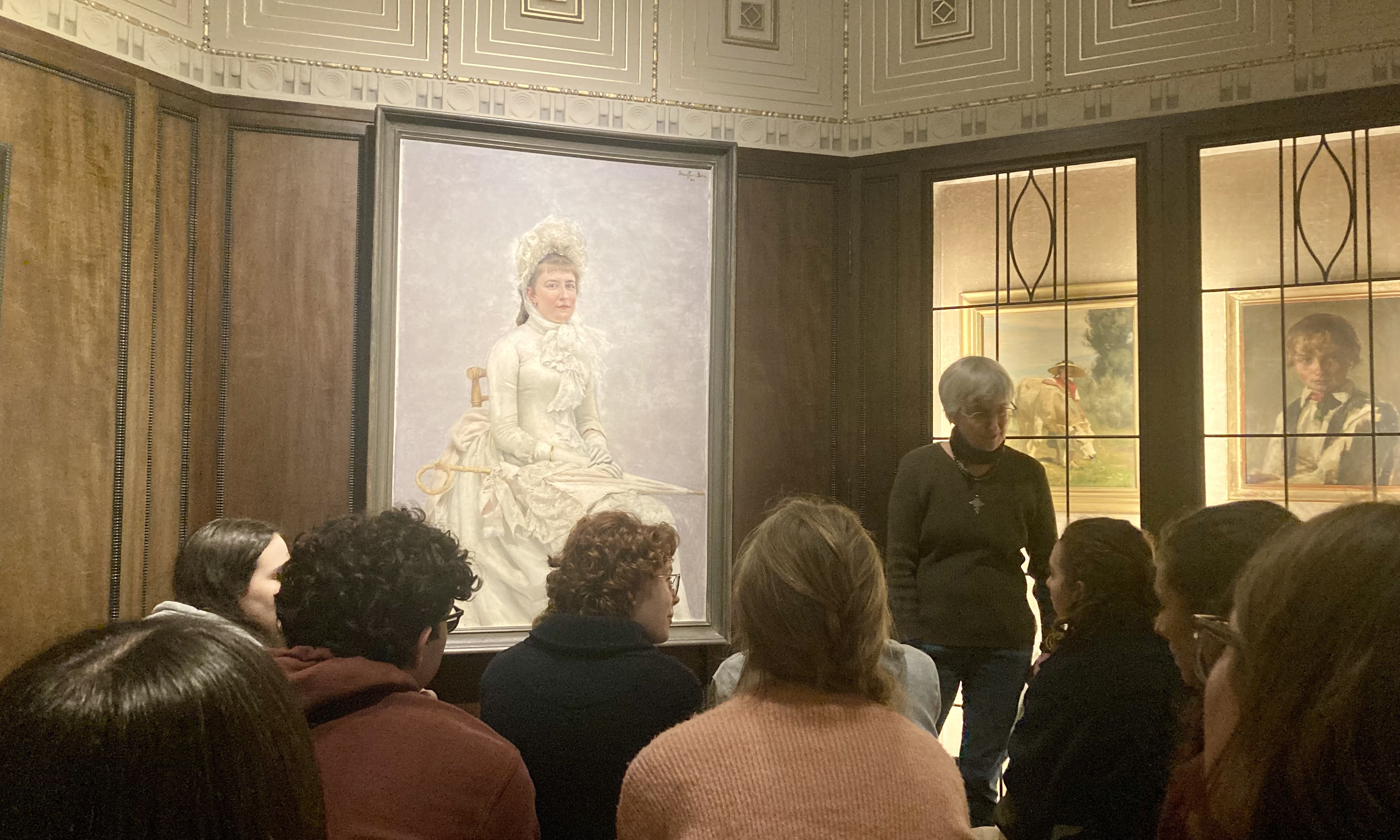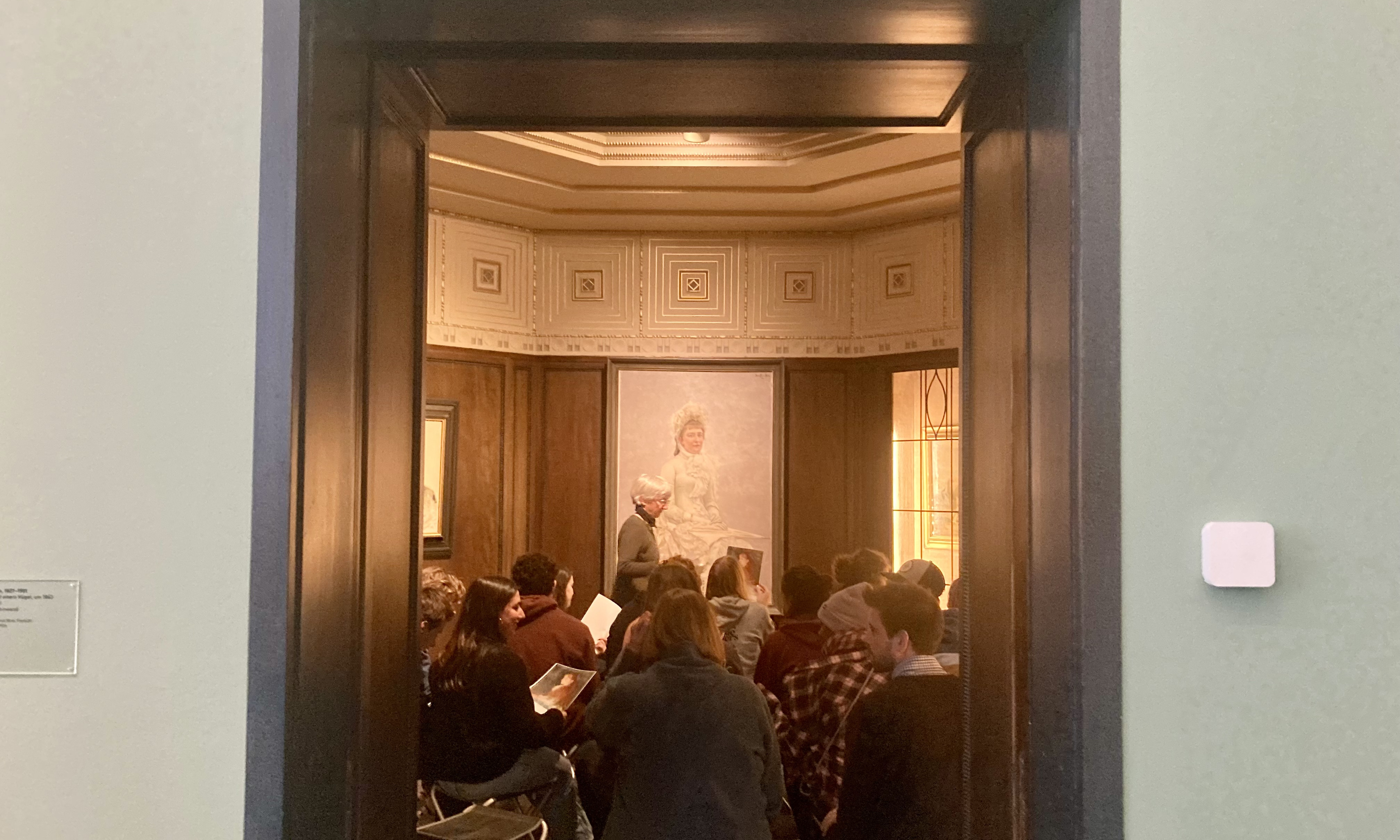On our 8th ToK day we dealt with The Arts as the Area of Knowledge.
We spent the first part of the morning in lively discussions: The first question, “what is Art”, brought us straight into the topic: We had many definitions, some more narrow, others more open to interpretation, but we came to the consensus that there must be human creative power or at least intention behind it. We did not agree on whether art has to be something that is aesthetically pleasing,or if it has to be something newly created.
After this rather free discussion, we were shown a video clip of John Cage's piece "Tacet", which moves on the outer limits of art and also challenged our definitions. In the clip you can see a whole orchestra and a tense conductor. But nobody plays, not a note is heard. We discussed if this piece was art or not and once again, we couldn't find a definitive answer. Afterwards we looked at the painting “Hoffnung” by R. Oberhänsli and an excerpt from Goethe's Faust I, which we both unanimously identified as art. We concluded that we were finally in agreement, because these pieces contained more classical art values. Here, however, the question of the meaning behind these pieces came into play, and derived from this the question whether art must carry a meaning. We also briefly focussed on film and photography as methods and tools for art and examined their advantages and disadvantages. We learnt that the methods and tools of art can be incredibly strict and precise, but can be very free aswell.
In further discussions, we found out that art is used for escape, reward, communication and personal catharsis, and that art can be awarded not only by experts but also by society and popularity or even an individual. If for example you, as a child draw something and give it to your parents they would say that piece of art is valuable even though it would seem worthless to experts and society.
The last point of our discussion concerned the ethics of art: We examined different cases: Among others, the well-known "body worlds" exhibition where art was made with dead bodies and fish in mixers by Evaristti where the materials of art raise ethical questions But we also asked ourselves the omnipresent question of whether art can be separated from the artist; Can one still watch Harvey Weinstein films? Listen to Michael Jackson?
We came to the conclusion that this difficulty in defining art makes this area of knowledge very different and special. Nowhere else are we allowed so much individuality and freedom of interpretation.
Then we went to the Kunsthaus. There we were able to enjoy an exciting guided tour, which was directly linked to the question of ethics in the field of art, as we started in the room with art from the golden age of the Netherlands, whose wealth at that time was based on the beginnings of colonialism. In front of the painting “Stillleben mit Hummer und grosser Zinnkanne”, we had to turn round and list what we saw. We could name everything except for one object that nobody knew what it was. The very ToK realisation: You only see what you know! We then turned our attention to the painting "Die Gotthard Post" by Rudolf Koller. We talked about the perspective and movement of the painting, which depicts an impossible scenario, but also about its dedication to Alfred Escher. We continued with the portrait of his daughter, Lydia Welti-Escher and learnt about her way of living.
Then we were led over to the new building and entered the infamous Bührle Collection. There we learned about the life and wrongdoings of Emil Bührle but also looked at the portrait and life of another young woman called Irène Chan d'Anvers. Finally we talked about the importance of provenance stories of the pieces, especially in relation to possible “NS-Raubkunst”.
After the lunch break, we met again in the classroom in the LG and dedicated ourselves to a very personal task: everyone had to pick out their favourite film, song or piece of literature and think about how it fullfils our aesthetic needs, how we can share and appreciate the experience it expresses and what its scope might be. After 20 minutes a few students got to present their favourite pieces of art. From the children's movie "Rio" to a touching song by Adele, we had it all. We were able to recognise one thing in common in our artworks: These artworks serves us as an escapism; as a place of retreat where we feel understood and safe.
Bonnie Nia, 5i



